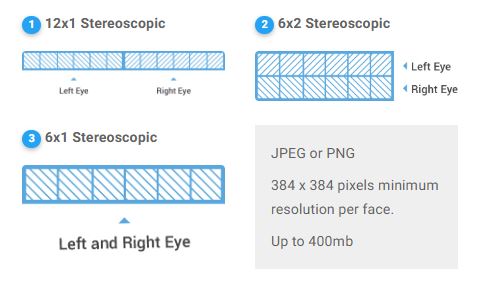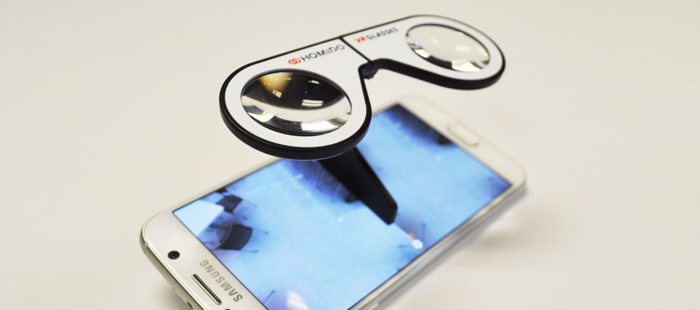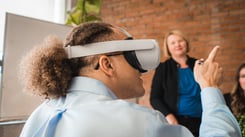Architecture, interior design, and other commercial design industries are extremely established sectors of Enterprise. With roots dating back to the beginning of civilization, designers are no stranger to the latest technological advancements and optimizing their workflows with them. And in the past decade, the latest one to disrupt the industry is Virtual Reality.
In just the past 5 years, the Virtual Reality industry has been one of the fastest growing sectors in technology thus far. By 2027, the VR market is projected to be worth $62.1 billion and is expected to expand a CAGR of 21.6%. And thanks to mass technological advancements and revolutionary headsets releases like the Oculus Quest, VR has become an incredibly accessible, affordable, and powerful tool for those in the commercial design industry. However, while early adopters have already experienced how invaluable this industry-disruptive technology can be, it can be difficult to understand and at times overwhelming trying to decipher what VR is or the value it brings to the firm or a designer’s workflow.
So today, we’ll be taking an in-depth overview answering the question “what is VR?”, the specific barriers it answers for those in commercial design, and the value it brings to your processes.
What is VR?
Contrary to popular belief, VR is not new technology. Some of the first stereoscopic photos and viewers date back to 1838 where English scientist and inventor Charles Wheatstone made a groundbreaking discovery on creating depth in photographs. By arranging two images side-by-side and viewing them through a stereoscope, Wheatstone saw that it creates an illusion of dimension, bringing the static stationary images to life. This first major development in three-dimensional viewing laid the foundation for how we experience VR today.
In the technical sense, VR uses stereoscopic or monoscopic images (also known as cubemaps) to facilitate VR experiences. Some VR platforms are also compatible with equirectangular images and spherical panoramas (360-degree photos). Most VR headsets are built with two small monitors which will provide the separate images for the stereoscopic graphics. Depending on whether the headset is tethered, which means it needs to connect to a PC to operate, or a standalone device like the Oculus Quest, the hardware will come with sensors that will analyze your movement and mimic it in the headset, giving the greater illusion that you’re inside the virtual world.

However, to keep things simple, VR is a platform that allows you to experience a world that doesn’t exist. It is for this reason VR gaming has become the most popular use of this branch of immersive technology. However, the technology itself is incredibly flexible and can be manipulated to fit the needs of the end user. And especially with industries like commercial design that rely on the clients being able to visualize and understand graphic content, Virtual Reality offers a greater solution that goes beyond 3D Visualizations and photo-realistic renders.
So what value does VR exactly bring to commercial design industries?
1. No Room for Ambiguity
For starters, when using VR, what you see is what you get. Our clients have shared that one of the biggest and most consistent challenges is communicating your vision to their clients. For those without an architecture or design background, spatial visualization is a skill that doesn’t come as second nature. Understanding the specs, reading floor plans and deciphering line drawings is confusing to most people, and can end up creating a larger barrier rather than a greater understanding. And while you may have prepared an array of 3D models and rendered images for your pitch, any feeling of disconnect could potentially lead to them saying “I’m just not seeing it”. However, VR software helps remove this burden of communication and turn it into an opportunity to build trust faster and much more effectively.
Indy Dehal, principal architect at ALSC Architects and early adopter of Yulio VR, says it best:
“When we’re presenting to clients using Sketchup 3D models - people often don’t understand what they’re looking at or specifically where they are within a design. VR offers another way for us to share and communicate our design intention. So many people have a hard time reading floor plans and even 3D renderings so VR offers us a tool to help them visualize more clearly and understand what they’re going to get.”
Not only does VR help create a line of perfect communication, but it simultaneously builds confidence in your clients since they can immediately understand the size and scale of your proposal. By immersing your clients in VR and allowing them to be fully surrounded by your vision, they are able to comprehend what you are trying to achieve.
2. Improving ROI
One of the most common concerns from firms both big and small is the costs associated with integrating VR software. VR has gotten quite a bad reputation for being inaccessibly expensive and too high-priced for many companies to consider making the plunge. However, the steep cost often associated with getting started with VR best describes what it’s like investing in tethered hardware.
What sets tethered rigs apart from mobile standalone headsets like the Oculus Quest is the startup cost. The headset itself, like an HTC Vive is around a $1,000 investment, along with another $5,000 for a computer that can operate the hardware. Unfortunately, tethered headsets require a powerful computer to support the hardware, so a regular PC may not fit the specifications.

The Homido Mini clips onto your phone as a quick and easy way to view VR on your mobile device.
However, if you are currently an owner of a smartphone, you already have most of the hardware needed for mobile VR. Thanks to the advancements in cellular technology, almost all smartphones are able to support VR experiences - the only part missing is a viewer that can translate stereoscopic images. Here at Yulio, we have been using the Homido Mini for years because they’re compact, incredibly effective, and only costs about $15 per goggle. It’s been a fantastic asset since it’s brandable and easy to ship to any of your remote clients. However if you’re looking for an even greater immersive experience, standalone headsets like the Oculus Quest 2 are currently priced at $299USD and will deliver an outstanding and unforgettable VR experience. Adding the price of software that can host your projects like our Yulio Pro plan will cost $35 monthly. To sum it all up, getting started with mobile VR will be under $1000, the price of the tethered headset, and winning a single job will easily pay for it.
3. Avoid Costly Mistakes
If you’ve been in the business long enough, you’ll understand how mid-project changes can be costly both in terms of budget and to the relationship you have with your clients. Chances are, you’ve encountered feedback like “I thought it would be bigger/smaller/brighter/darker”. And while rendered images and physical models are methods and tools to help you communicate your design, oftentimes there is still a disconnect where you and your clients may have mismatched expectations.
The good news is that much of the details missed on paper can be caught when walking through your virtual environment. Virtual Reality is a fantastic tool that gives you the flexibility to build and experiment with configurations and scenarios that would be too costly, too unrealistic, and especially too big to construct. A VR project gives your clients the opportunity to look up, down, and all around, helping them get a greater glimpse into your project that can’t be done with traditional static images. By creating a perfect understanding, your clients will also be able to return to your team quality and much more specific feedback as to what they liked or areas that need improvement. However, while VR is a fantastic tool to use when pitching to your clients, it can also be used within design teams.
.jpeg?width=763&name=BUSINESS%20READY%20VR%2076%20(1).jpeg)
Although architecture and design are very much artistic creative fields, sometimes designers will feel stuck trying to find a solution that makes the most ergonomic sense or one that needs to look more aesthetically pleasing. Aside from client-facing presentations, our clients have also been using VR as a collaboration tool within their design teams, brainstorming how to best revise and change their designs in between iterations. Plus, it also serves as a revision tool, helping to spot any mistakes or areas that can be further improved or optimized.
The Value of VR in Commercial Design Industry
With its innate ability to answer some of the most pressing communication challenges with clients while taking them on a full visual storytelling journey, VR can help cut down on the constant back and forth meetings with clients and lead to faster ROI. Plus, with such a low cost of entry and ease in accessibility, implementing VR into commercial design workflows is possible for even the smallest of firms, giving anyone the extra edge to stand out from the competition. It’s time to experience for yourself how truly easy, quick, and simple it will be to integrate mobile VR into your workflows.
Not sure where to start with implementing a VR strategy in your firm or processes? Access our free resource VR Integration that Drives ROI and get started today. To explore our VR platform for yourself, sign up for our 30 day free trial that will give you access to our wide range of features.
Updated From: November 5, 2020




